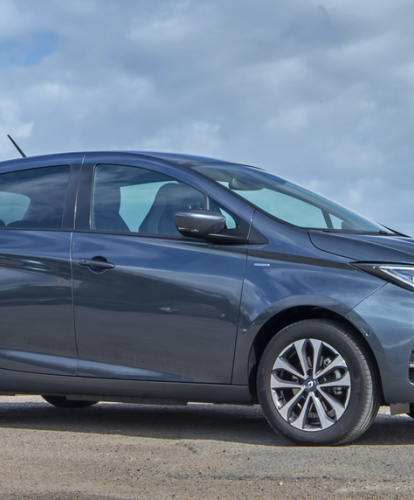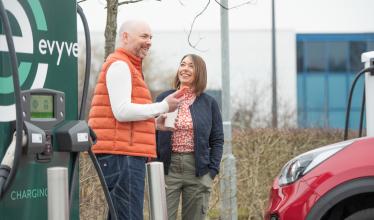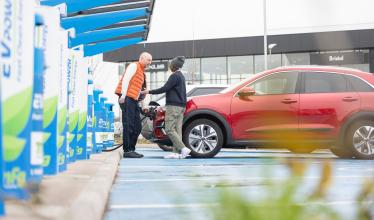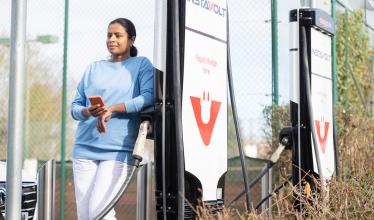As popular EVs go, Renault’s Zoe is right up there with the Nissan Leaf and BMW i3. It’s got a big following in the UK and Europe, as buyers fall for the charms of the pure-electric supermini.
There’s now a new one, with this latest Zoe featuring styling changes, a new battery and electric motor, and improved interior to keep it competitive in an increasingly tough sector. Zapmap went on the car’s launch in Sardinia to see how it gets on.
Renault Zoe Z.E.50 – driving impressions
The outgoing Zoe offered a choice of two electric motors – the Q90 and R110. This new model does the same, though ditches the previous entry level motor, and adds a new more powerful R135 option. This sees a 0-62mph time of 9.5 seconds available, and a top speed of 87mph. The improved performance is barely noticeable at low speeds, as electric motors are responsive and quick to accelerate in almost any EV.
Higher up the speedometer however, and the added grunt is welcomed. The new Zoe will pick-up quickly from 50-70mph for example, much better than before. It’s likely to prove a bit more comfortable at pace on the motorway too, though there wasn’t a chance to test that on the launch.
On the country roads threading along the coastline of northern Sardinia and through the towns and villages en route, the Zoe performed very well. It’s got more than enough power to climb even steep climbs rapidly. There’s even enough to the motor to confidently pass slow-moving coaches, motorhomes, and the like struggling up the hills.
The new Zoe effectively handles the same as before, since Renault has made no real changes here. The little Renault is agile, and easy to thread through tight gaps. It’s also got a fair amount of grip on offer, and the steering is precise even if the steering is light and without much feel.
It’s ideal for local work, but the previous Zoe settled down capable on faster roads, and I would expect the same with this new model. It’s not designed for motorway cruising though, nor for a quick run down a twisty B-road. Here, you will certainly feel the Zoe’s weight shift on entering the corner, with a fair amount of body lean.
Renault Zoe Z.E.50 – new styling and equipment
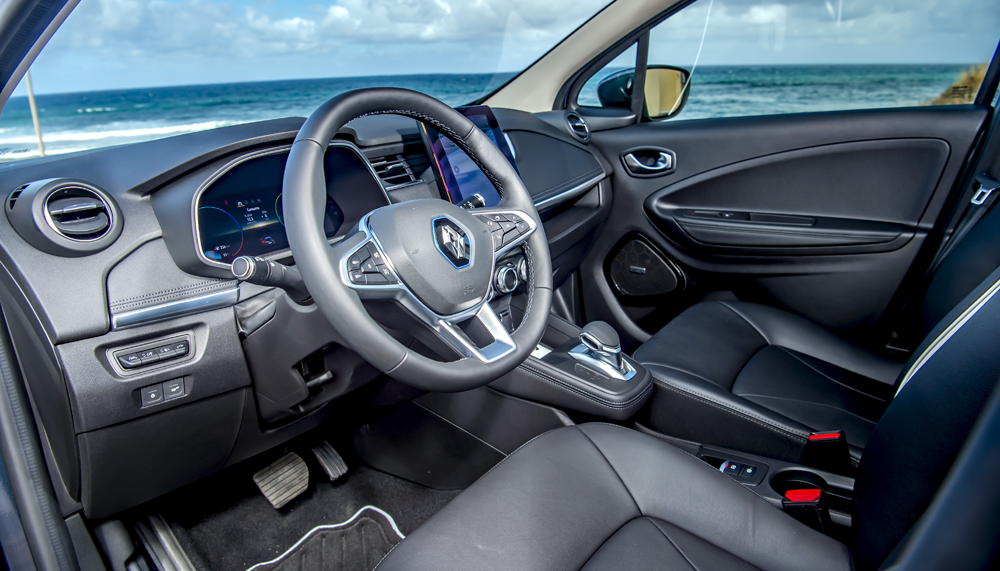
Renault has deliberately left the design largely alone with this new Zoe. Feedback from customers was that it certainly ain’t broke, so why try and fix it. It keeps costs down anyway, and the new Zoe is based on the same platform as the previous model. It’s certainly sharper to look at than before, and more in keeping with the current Renault range – perhaps signifying its place in the line-up, and not as a satellite model.
The interior has seen plenty of attention paid to it, and this is excellent news. New materials – including recycled textiles as an option – make for a more stylish cabin. The driver gets a new steering wheel and instrument panel, both of which are improvements over the outgoing model.
Drive selection is now via a digital rocker switch rather than a traditional stick, and it’s placed on the centre console rather than the floor. The infotainment system sees a significant upgrade too, now available with a 9.3-inch portrait display with smartphone connectivity and clear mapping.
Space inside is the same as before, which sees space a little cramped in the back for taller passengers, though a very useful boot space for a car in this class.
Renault Zoe Z.E.50 – EV features
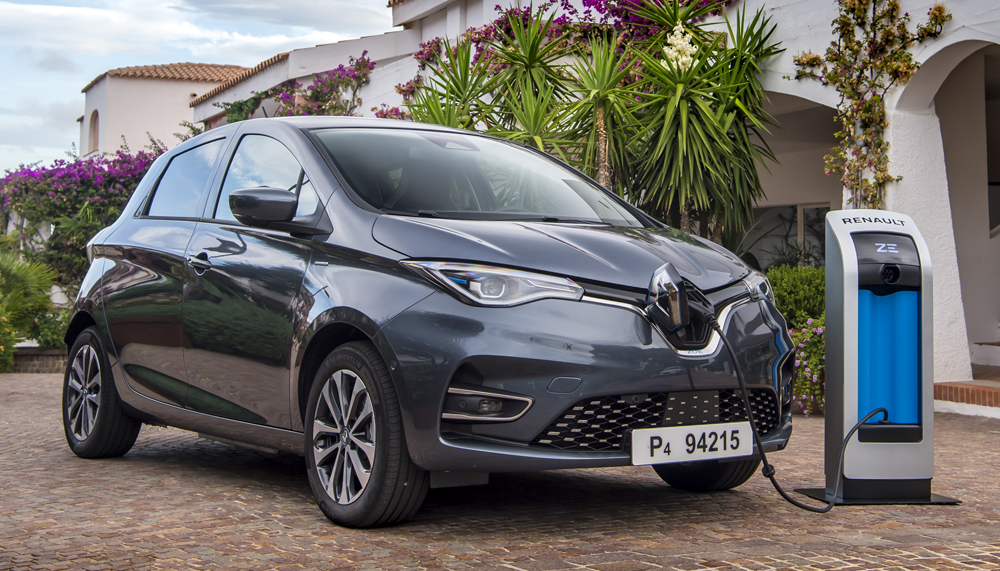
Headlines for the new Renault Zoe are shared between a larger capacity battery and the newly added CCS charging capabilities. The batter is now 52 kWh in capacity, yet takes up the same amount of physical space as the original Zoe’s 22 kWh pack. This is down to improved packaging and chemical design – though it could well be sorcery considering the advances made in the space of around seven years.
The new battery allows Renault to quote a range of up to 245 miles on a charge for the R110 model, and 240 miles for the R135 version. Both are WLTP figures, and as such, expected to be comfortably attainable without much fuss.
On the launch, covering some serious climbs and descents, we got a calculated range of 223 miles on a charge, having covered around 130 miles over the two legs of the route. The weather was lovely and warm which will help, and there were no long stretches sitting at 70mph, though there were a few concerted patches of 60mph or so to help simulate some faster work.
The route featured more climbing and descending than most drivers would encounter day-to-day, and launch drives tend to push the performance more than everyday driving styles, so I’m happy that Renault’s range figures are a fair reflection as to what would be possible with normal driving on a clement day.
Charging wasn’t required, but the new CCS inlet will be welcomed by many. It allows up to 50 kW DC rapid charging, though considering rivals such as the Peugeot e-208 and Vauxhall Corsa e are only just over the horizon offering 100 kW charging capabilities, it seems as though Renault has pitched a little too low.
CCS is an option for buyers, though only £750, for the mid- and top-level trims. Again, this is to keep costs low for buyers that don’t need it, and Renault’s Chameleon charger is fitted as standard. This sees the existing 22 kW Type 2 AC on-board charger used.
Renault Zoe Z.E.50 – verdict
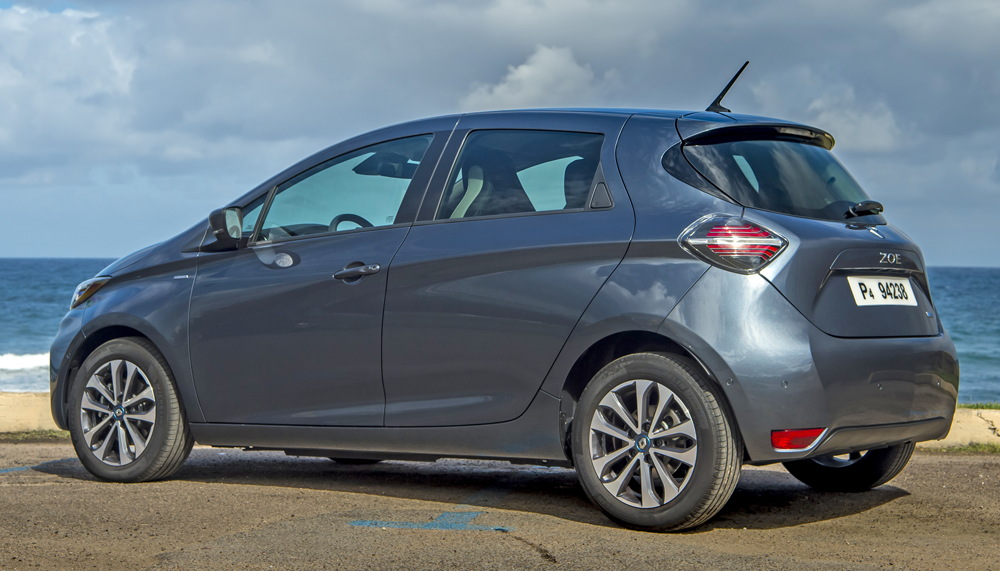
Renault has taken what was already a good EV and improved it significantly. Improved performance, boosted range, and a huge step forward in cabin quality and equipment give this new Zoe some powerful weapons in its arsenal.
In a market that it once had to its own – the Nissan Leaf and VW e-Golf are bigger, Smart EQ forfour smaller, and BMW i3 pricier – the Zoe now faces direct competition from Peugeot and Vauxhall. As such, these improvements were certainly necessary, though Renault must be commended that it has never been backward at updating its Zoe regardless.
Comparing the stats, the Corsa e and e-208 will be able to charge faster than the Zoe, and cost a similar amount – though the official residual values for the Zoe will be better. The Zoe will cover around 30 more miles on a charge however, so it’s by no means behind in the market.
